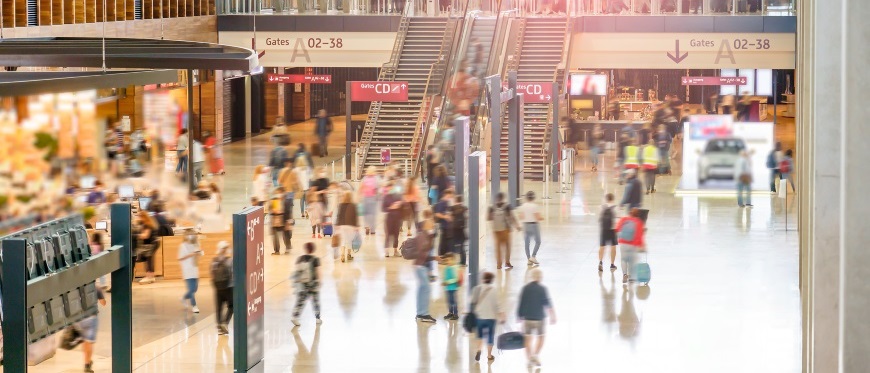With the end of local lockdowns across the United States and recovery from the worldwide coronavirus (COVID-19) pandemic firmly underway, enthusiasm for consumer air travel has rapidly returned. With air transportation acting as a known pathway for the swift global spread of the virus, it is little wonder that the last two years have put airport hygiene under the spotlight, prompting a deep reevaluation of cleaning strategy from departure gate to touchdown.
Consumers now demand visible, long-term improvements to sanitization across many different industries – and travel is no exception. Hygiene expectations now factor across the entire travel journey. The cleanliness of each airport – from small aerodromes to international hubs – is today a key consideration point for customers when booking leisure or business travel. Here, we examine how airports are revolutionizing hygiene standards.
Hand hygiene: the first line of defense
Across the globe, many airports are taking steps to improve hygiene standards. Not only is it important in continuing to attract customers in a post-pandemic world, but it should also help prevent and control epidemic relapse.
The first step to improve airport sanitization starts with better hand hygiene. For a long time, at most airports, restrooms were the only place that offered personal hygiene to passengers. Now that we all have a better grasp of hand hygiene education, airports across the globe have implemented signage in corridors and communal areas reminding people to wash their hands.
Some are calling for hand hygiene to become a core part of airport security, with hand sanitizing stations installed for passengers to use as they move through checkpoints. Hand sanitizing outside the restroom can help build a cleaner airport environment and help slow down future contagions.
Airport hygiene standards: other factors that matter

As well as providing customers with high quality soap and hand sanitizer products for use at touchpoints across the airport, here are some of the other factors that airports can strengthen to improve their overall hygiene offering.
Increased ventilation: Improving air-conditioning systems and natural ventilation in public places such as terminals can greatly improve the health of an airport. Taking practical measures to improve air circulation relative to the layout and local climate can help enhance overall airport hygiene.
Enhanced waste management: The cleaning of waste containers such as trash cans and the disinfection of the containers after garbage collection, either by spraying or wiping with disinfectant, can greatly improve the hygiene in an airport.
Amplified disinfection of public areas: Surface disinfection of crowded places and high-touch surfaces (such as self-help kiosks or check-in counters, document verification counters, buttons in elevators, and handrails) can help improve general airport sanitization.
Daily preventative cleaning: After the daily operation, areas such as security inspection sites, baggage packing areas and document verification counters should be wet-cleaned and disinfected to keep the environment as safe as possible.
Which airports are getting it right?
Airports have long been considered merely functional, clinical spaces. But perception is changing. Whether today’s travelers are flying a short distance with friends or taking a solo trip to a long-haul destination, many want their experience to start as soon as they set foot in the airport.
An airport that prioritizes cleanliness and a great customer experience can make the vacation experience feel special from the outset. Good food and drink, unique spaces that offer more than just a place to sit, indoor gardens, rooftop terraces with runway views, playgrounds to keep the kids happy and even pet relief (urination) areas are real examples of implementations that bring the airport experience right up to date.
According to the global customer satisfaction survey by Skytrax1 – which takes into account everything including public transport options, waiting times, cleanliness, choice of food and shops, and accessibility adjustments – Asia boasts the world’s best airports. In 2022, Hamad International airport in the state of Qatar takes the top spot, followed by Tokyo Haneda and then Singapore Changi.
As for the cleanliness of North American airports, Seattle-Tacoma came in at first place, closely followed by Vancouver then Cincinnati/Northern Kentucky. Based on physical inspections, testing and assessment of cleanliness and hygiene standards, these three airports were considered to offer exemplary hygiene protocols.
Sources
1 Skytrax: The world’s cleanest airports
